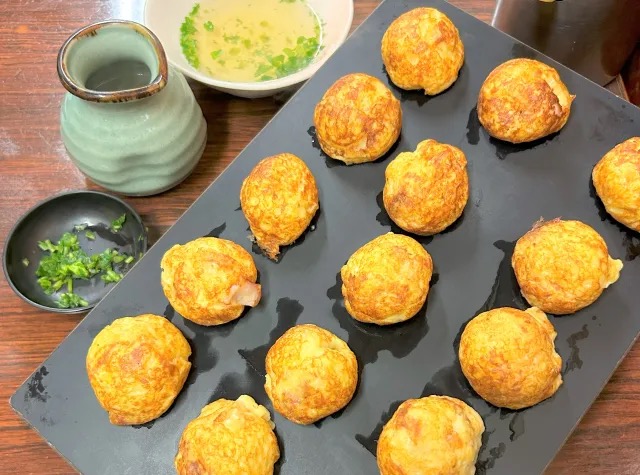
Osaka might be famous for takoyaki, but Akashi is the place where octopus balls first started.
It’s been around 10 years since our reporter K. Masami first ate Akashiyaki, when she ordered it from a takoyaki store. Back then, she thought it was an interesting alternative to the more famous Osaka specialty, takoyaki (fried octopus balls), with dashi soup stock used to flavour the balls instead of a rich sauce.
However, when she found herself in the city of Akashi — the birthplace of Akashiyaki — in Hyogo Prefecture the other day, she realised there was a whole lot more to the humble dumplings that she never knew about before.
▼ Her first revelation came when she was looking for a place to try it in Uo no Tana (literally “Fish Shelf”), a market outside the station that has a history stretching back 400 years.
As she entered the market, she expected to see posters proudly extolling the virtues of Akashiyaki and stall owners calling to out-of-towners like herself to try it. After all, this dumpling takes its very name from the city, so she thought there would be advertising for it everywhere.
However, as she walked by the many stalls, she began to realise something. There were no signs for “Akashiyaki” anywhere. What she did find were a number of purveyors advertising “Tamagoyaki” on storefront signs. Tamagoyaki literally translates as “fried egg” but is usually the term used for a Japanese rolled omelette, a dish that isn’t particularly famous in the area, so Masami couldn’t quite work out what was going on.
▼ Stores with the word “玉子焼き” (“Tamagoyaki”) on their signs could be found throughout the area.
Coastal Akashi is famous for octopus, and as she browsed the storefronts Masami could see fresh examples for sale everywhere. However, Masami wasn’t here for fresh octopus, she was here for dumplings that contained octopus, cooked up like takoyaki, in rectangular pans with holes, like this one seen above one of the stalls.
When she saw the familiar pan on the awning of the store above, she thought she’d finally found Akashiyaki, but a closer look at the sign revealed the words “明石玉子焼” (“Akashi Tamagoyaki”). Standing in front of the stall for a moment, Masami’s mind began whirring and equations floated around her head like she was some kind of meme as she worked to put the pieces of the puzzle together, using the visual clues that lay before her.
“A pan for Akashiyaki…but the words ‘Tamagoyaki’ yet again…could this mean…?”
She may have been slow on the uptake, but Masami now realised she must be on to something. Confirming her hunch with a quick search online, Masami clicked her fingers in delight as she finally solved the puzzle — here in Akashi, the dumplings aren’t called Akashiyaki, they’re called…Tamagoyaki!
With the puzzle now solved, Masami lined up at what looked to be the most popular joint, a store called “Takoiso” (“たこ磯”), which bore a sign that read, “Akashi’s famous specialty, Tamagoyaki“.
It was now past noon and the restaurant was already full, with a line of people queuing outside, many of whom looked to be local regulars. The menu was very simple, but in addition to the standard dumplings, containing only octopus, Masami saw there was also a variety containing a mix of octopus and conger eel, so she decided to order that option.
▼ For 1,100 yen (US$7.51), Masami received 15 dumplings, and they were beautifully served on a long plate.
This would be her first time in a decade to try Akashiyaki, and when she held one of them in her chopsticks, she could feel it was super soft and fluffy, so she loosened her grip slightly to ensure it didn’t break.
Unlike takoyaki, which are covered in seaweed laver, mayonnaise and a dark and rich sweet and salty sauce, Akashiyaki are served plain, with customers dipping each ball into dashi soup stock. Once Masami had dipped her ball into the stock, she placed it in her mouth and it felt as if the morsel melted away on her tongue immediately. It was much more soft and delicate compared to takoyaki — so much so that it was like an entirely different dish.
The fried balls themselves were soft, but the dashi softened them even further, creating heavenly, pillowy flavours of octopus and conger eel. Although the seafood flavours were pronounced, the dashi broth was mild, making them incredibly easy to eat.
As she ate her way through each delicious fried ball, she did a little research on her phone and was surprised to find that Akashiyaki was actually the predecessor to takoyaki, with Osaka having nabbed the idea for their fried octopus balls after seeing the popularity of the octopus balls in Akashi.
Akashiyaki were first made in the Meiji period (1868-1912) as a way to make use of egg yolks, which were going to waste during local production of Akashidama, a decorative coral that required egg whites. The dumplings were popularised by a stall holder in Akashi in 1919, followed by the introduction of takoyaki by a purveyor in Osaka in 1935. Although Akashi’s dumplings were long known as “Tamagoyaki” since their inception, a city official renamed them as Akashiyaki in the late ’80s as a way to promote the city.
▼ Whether you know them as Tamagoyaki or Akashiyaki, one thing is for certain — they’re absolutely delicious, and definitely worth trying.
So if you ever find yourself in Hyogo Prefecture, you might want to swing by Akashi for a taste of the balls that started the worldwide craze for octopus balls. Just remember, while some places in Osaka also sell them, under the name “Akashiyaki”, in Akashi, they’re known as “Tamagoyaki”. It’s one of the many charms of Hyogo Prefecture, which is also home to a castle town with one of the country’s best breakfasts.
Images © SoraNews24
● Want to hear about SoraNews24’s latest articles as soon as they’re published? Follow us on Facebook and Twitter!
[ Read in Japanese ]

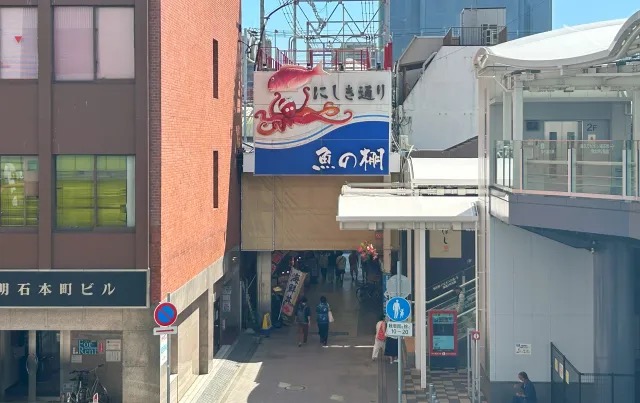

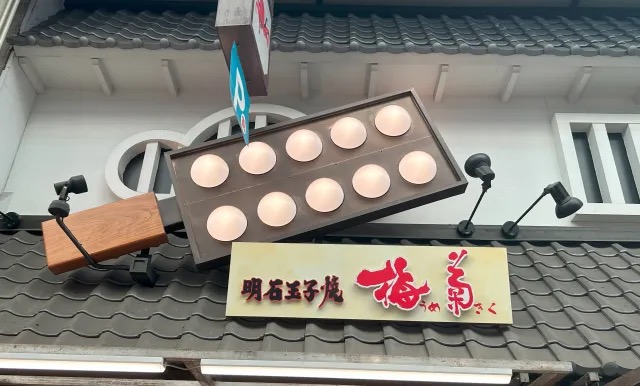
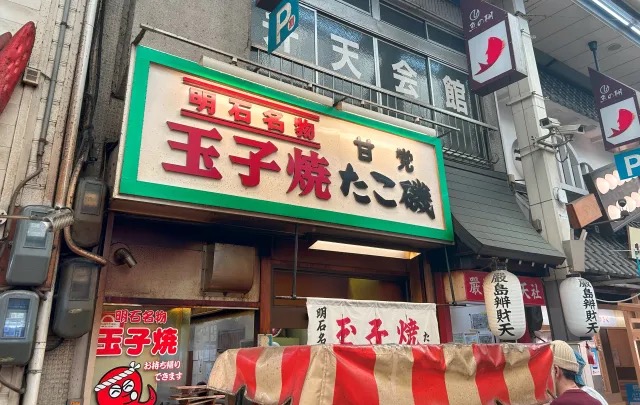
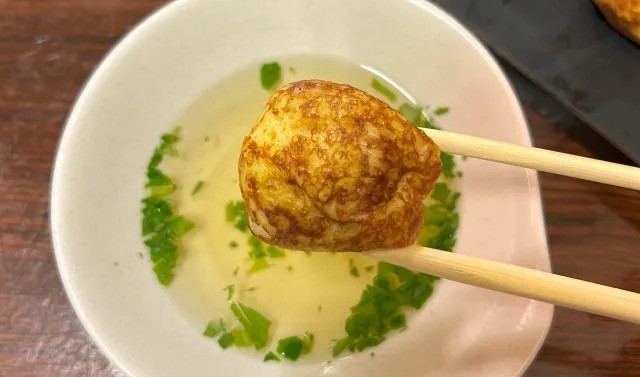

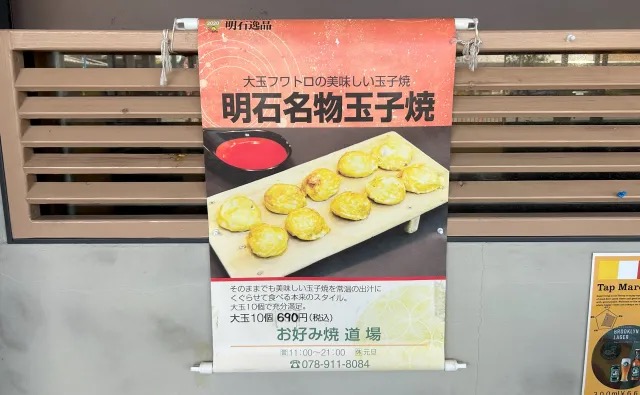
 Everything you need to know about takoyaki (octopus balls) 【Video】
Everything you need to know about takoyaki (octopus balls) 【Video】 Takoyaki…inarizushi? New fusion food boggles the mind in Japan
Takoyaki…inarizushi? New fusion food boggles the mind in Japan New takoyaki gacha toys designed by a Japanese voice actress come with surprise fillings
New takoyaki gacha toys designed by a Japanese voice actress come with surprise fillings Octopus balls become octopus planets with amazing tweak to takoyaki recipe
Octopus balls become octopus planets with amazing tweak to takoyaki recipe Starbucks blends Japanese and Western flavours together in new Frappuccino
Starbucks blends Japanese and Western flavours together in new Frappuccino Japan’s new difficult-to-drink-from beer glass protects your liver, but it’s a brutal experience
Japan’s new difficult-to-drink-from beer glass protects your liver, but it’s a brutal experience How to order snacks on a Shinkansen bullet train in Japan
How to order snacks on a Shinkansen bullet train in Japan New Pokémon ice cream, dessert drinks, and cool merch coming to Baskin-Robbins Japan【Pics】
New Pokémon ice cream, dessert drinks, and cool merch coming to Baskin-Robbins Japan【Pics】 Demon Slayer: Kimetsu no Yaiba gets new roller coaster attractions and food at Universal Studios Japan
Demon Slayer: Kimetsu no Yaiba gets new roller coaster attractions and food at Universal Studios Japan Caffeinated ramen for gamers that you can eat with one hand going on sale in Japan
Caffeinated ramen for gamers that you can eat with one hand going on sale in Japan Burger King Japan suddenly adds Dr. Pepper and Dr. Pepper floats to its menu nationwide
Burger King Japan suddenly adds Dr. Pepper and Dr. Pepper floats to its menu nationwide “The most Delicious Cup Noodle in history” – Japan’s French Cup Noodle wins our heart【Taste test】
“The most Delicious Cup Noodle in history” – Japan’s French Cup Noodle wins our heart【Taste test】 New samurai glasses are Japan’s latest weird must-have souvenir
New samurai glasses are Japan’s latest weird must-have souvenir Doraemon found buried at sea as scene from 1993 anime becomes real life【Photos】
Doraemon found buried at sea as scene from 1993 anime becomes real life【Photos】 Hello, cosmetics! Clinique teams up with Hello Kitty this summer for first-time collaboration
Hello, cosmetics! Clinique teams up with Hello Kitty this summer for first-time collaboration Nintendo history you can feel – Super NES, N64, and GameCube controllers become capsule toys
Nintendo history you can feel – Super NES, N64, and GameCube controllers become capsule toys Starbucks releases a cute Frappuccino and Unicorn Cake…but not in Japan
Starbucks releases a cute Frappuccino and Unicorn Cake…but not in Japan Kyoto Tower mascot termination reveals dark side behind cute Japanese characters
Kyoto Tower mascot termination reveals dark side behind cute Japanese characters McDonald’s Japan’s Soft Twist Tower: A phantom ice cream only sold at select branches
McDonald’s Japan’s Soft Twist Tower: A phantom ice cream only sold at select branches Yabai Ramen: What makes this Japanese ramen so dangerous?
Yabai Ramen: What makes this Japanese ramen so dangerous? Finally! Nintendo Japan expands Switch 8-bit controller sales to everybody, Online member or not
Finally! Nintendo Japan expands Switch 8-bit controller sales to everybody, Online member or not Japanese government wants to build luxury resorts in all national parks for foreign tourists
Japanese government wants to build luxury resorts in all national parks for foreign tourists To combat declining birth rate, Japan to begin offering “Breeding Visas” to foreigners
To combat declining birth rate, Japan to begin offering “Breeding Visas” to foreigners 10 things you should buy at 7-Eleven in Japan
10 things you should buy at 7-Eleven in Japan Studio Ghibli releases anime heroine cosplay dresses that are super comfy to wear
Studio Ghibli releases anime heroine cosplay dresses that are super comfy to wear Woman charged for driving suitcase without a license in Osaka
Woman charged for driving suitcase without a license in Osaka Studio Ghibli unveils My Neighbour Totoro miniature house model
Studio Ghibli unveils My Neighbour Totoro miniature house model Kyoto experiencing problems with foreign tourists not paying for bus fares, but not on purpose
Kyoto experiencing problems with foreign tourists not paying for bus fares, but not on purpose Fighting mild hunger with a Japanese soda that turns into jelly in the stomach【Taste test】
Fighting mild hunger with a Japanese soda that turns into jelly in the stomach【Taste test】 Studio Ghibli’s Howl’s Moving Castle tapestry unveiled in Japan for first time
Studio Ghibli’s Howl’s Moving Castle tapestry unveiled in Japan for first time McDonald’s new Happy Meals offer up cute and practical Sanrio lifestyle goods
McDonald’s new Happy Meals offer up cute and practical Sanrio lifestyle goods Sales of Japan’s most convenient train ticket/shopping payment cards suspended indefinitely
Sales of Japan’s most convenient train ticket/shopping payment cards suspended indefinitely Sold-out Studio Ghibli desktop humidifiers are back so Totoro can help you through the dry season
Sold-out Studio Ghibli desktop humidifiers are back so Totoro can help you through the dry season Japanese government to make first change to romanization spelling rules since the 1950s
Japanese government to make first change to romanization spelling rules since the 1950s Foreigner’s request for help in Tokyo makes us sad for the state of society
Foreigner’s request for help in Tokyo makes us sad for the state of society Ghibli founders Toshio Suzuki and Hayao Miyazaki contribute to Japanese whisky Totoro label design
Ghibli founders Toshio Suzuki and Hayao Miyazaki contribute to Japanese whisky Totoro label design Tokyo’s most famous Starbucks is closed
Tokyo’s most famous Starbucks is closed Princesses, fruits, and blacksmiths: Study reveals the 30 most unusual family names in Japan
Princesses, fruits, and blacksmiths: Study reveals the 30 most unusual family names in Japan Takoyaki stand in Nagoya sold side orders of cocaine, police say
Takoyaki stand in Nagoya sold side orders of cocaine, police say How to turn Cup Noodle instant ramen into delicious Osaka-style dumplings【SoraKitchen】
How to turn Cup Noodle instant ramen into delicious Osaka-style dumplings【SoraKitchen】 Takoyaki store in Tsukiji serves up dried bonito flakes even bigger than the octopus balls
Takoyaki store in Tsukiji serves up dried bonito flakes even bigger than the octopus balls Secret staff cafeteria in Osaka is one of Japan’s best-kept secrets
Secret staff cafeteria in Osaka is one of Japan’s best-kept secrets World’s first Takoyaki Guitar created in Japan, features a gas grill and octopus balls
World’s first Takoyaki Guitar created in Japan, features a gas grill and octopus balls How to eat Japan’s super long noodles【Taste test】
How to eat Japan’s super long noodles【Taste test】 Kyoto curry bread comes with a very special filling
Kyoto curry bread comes with a very special filling “Hey, Japanese taxi driver, take us to the best takoyaki in Osaka!”
“Hey, Japanese taxi driver, take us to the best takoyaki in Osaka!” We miss out on cheap all-you-can-eat takoyaki, but stuff ourselves with octopus balls anyway
We miss out on cheap all-you-can-eat takoyaki, but stuff ourselves with octopus balls anyway Takoyaki sushi rolls at popular Japanese chain take California rolls to a whole new level
Takoyaki sushi rolls at popular Japanese chain take California rolls to a whole new level Want to be popular with the ladies/men? Be good at making takoyaki, study says
Want to be popular with the ladies/men? Be good at making takoyaki, study says Onigiri jewellery from Japan lets you wear your love of Japanese food on your fingers
Onigiri jewellery from Japan lets you wear your love of Japanese food on your fingers Takoyaki boat tray comes to life in Japan, sails down river near Tokyo
Takoyaki boat tray comes to life in Japan, sails down river near Tokyo Fried Oyster Ice Cream: the taste of the sea in a Japanese soft serve dessert【Taste Test】
Fried Oyster Ice Cream: the taste of the sea in a Japanese soft serve dessert【Taste Test】 This ramen restaurant has no name, is one of the best hidden finds in Japan
This ramen restaurant has no name, is one of the best hidden finds in Japan Starbucks Japan’s new Matcha Frappuccino: Brilliant beverage or drink disaster?
Starbucks Japan’s new Matcha Frappuccino: Brilliant beverage or drink disaster?
Leave a Reply